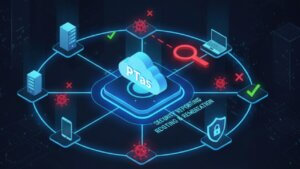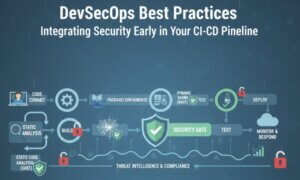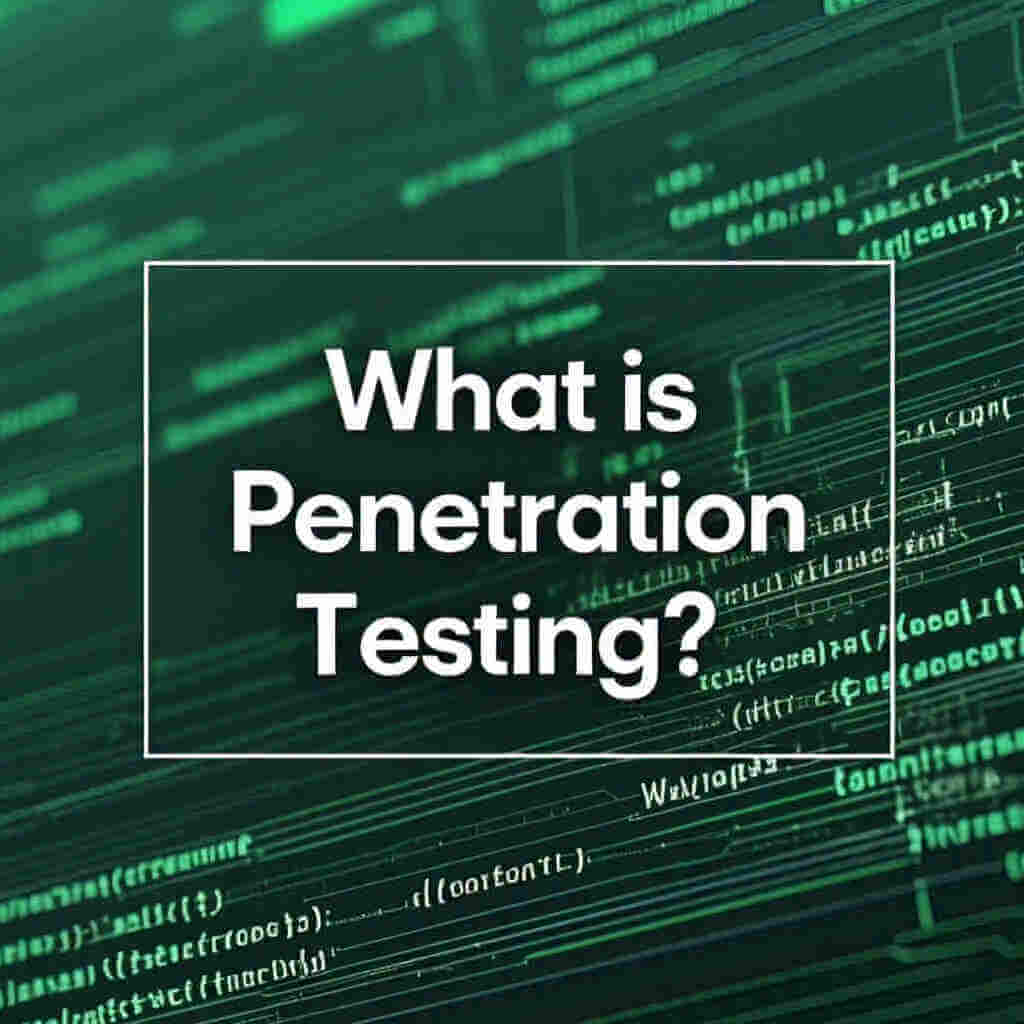The Evolution of Ethical Hacking in the AI-Driven Cybersecurity Landscape
Penetration testing (pen testing) has always been a cornerstone of cybersecurity, helping organizations identify vulnerabilities before malicious actors exploit them. However, as cyber threats grow more sophisticated, so do the tools and techniques used by ethical hackers.
In 2025, penetration testing is no longer just a manual process—it’s a dynamic, AI-driven discipline that blends automation, machine learning, and advanced adversarial simulations. This blog explores the state of penetration testing in 2025.
What is Penetration Testing?
Penetration testing is a simulated cyberattack against a computer system, network, or application to identify security weaknesses. Unlike automated vulnerability scans, pen testing involves human expertise to mimic real-world attack techniques.
In 2025, penetration testing has evolved beyond traditional methods, incorporating AI-driven automation, cloud security assessments, and adversarial AI simulations to stay ahead of cybercriminals.
Here are Some of The Key Objectives of Pen Testing in 2025:
Proactive vulnerability identification through simulated attacks
Security control validation for networks, apps, and cloud systems
Compliance assurance with evolving regulatory requirements
Incident response testing under realistic breach conditions
Modern pen testing has become more predictive and continuous, moving from point-in-time assessments to ongoing security validation.
Book Your FREE Cybersecurity Consultation Now!
Types of Penetration Testing in 2025
Now that we have understood what penetration testing or pen testing is, we head on to the different types as the penetration testing landscape has diversified to address new technologies and attack vectors. Organizations now require specialized assessments tailored to their unique infrastructure and risk profile.
a)Network Penetration Testing
Network security remains fundamental, but testing methodologies have adapted to modern architectures. Assessments now cover:
Traditional network infrastructure and protocols
5G networks and their unique vulnerabilities
IoT ecosystems and connected devices
Software-defined networking (SDN) environments
b)Web & API Penetration Testing
The shift to API-driven architectures demands new testing approaches for:
REST and GraphQL API security
Serverless application vulnerabilities
Microservices architecture risks
Progressive web app (PWA) security
c) Cloud Penetration Testing
Cloud adoption requires specialized assessments focusing on:
Multi-cloud and hybrid cloud configurations
Container and Kubernetes security
Serverless function vulnerabilities
Cloud identity and access management
d) AI-Driven Red Teaming
Advanced adversary simulations now incorporate:
AI-generated attack scenarios
Behavioral analytics for stealthy operations
Continuous security validation
Purple teaming collaborations
e) OT & ICS Penetration Testing
Critical infrastructure protection requires:
Industrial control system assessments
SCADA network security testing
Smart city infrastructure evaluations
Ransomware resilience testing
Modern Penetration Testing Tools & Techniques
The pen tester’s toolkit has undergone significant transformation as of 2025, blending traditional utilities with AI-enhanced capabilities, here is a simple list of some of the best tools and techniques for penetration testing in 2025
Cutting-Edge Tools
Burp Suite AI: Next-gen web app testing with machine learning
Metasploit 7.0: AI-assisted exploit development framework
Cobalt Strike++: Advanced red team operations platform
Nmap 5.0: Intelligent network reconnaissance
Emerging Techniques
Adaptive fuzzing with genetic algorithms
Behavioral attack chains mimicking APT groups
Quantum-resistant cryptography testing
Autonomous penetration testing agents
You might like this blog on the best network penetration testing tools to make a suitable choice in your pen tester journey!
AI & Machine Learning in Pen Testing
Artificial intelligence has become the force multiplier for security teams, enabling capabilities that were previously unimaginable.
Transformative Applications
Predictive vulnerability discovery through pattern recognition
Automated exploit generation reducing manual effort
Dynamic attack simulation that evolves with defenses
Anomaly detection at unprecedented scale
Real-World Impact
Security teams can now process millions of data points to identify subtle attack patterns and predict emerging threats before they materialize.
Ethical Concerns & AI Security Battles
The rise of AI in cybersecurity presents complex ethical dilemmas that the industry must address.
Key Challenges
Dual-use dilemma of offensive security tools: AI-powered penetration testing tools designed for ethical hacking can be easily weaponized by attackers, enabling automated exploits and large-scale attacks. For instance, red team tools that generate sophisticated phishing emails or discover zero-day vulnerabilities have been repurposed by cybercriminals.
Algorithmic bias in vulnerability detection: AI vulnerability scanners often inherit biases from training data, causing blind spots in security assessments—like overlooking Linux flaws when trained mainly on Windows systems. Studies show these tools perform inconsistently across architectures, risking false confidence in results.
Autonomous cyber weapons proliferation: Self-propagating AI malware and adaptive attack systems raise concerns about uncontrolled, large-scale cyber conflicts with minimal human involvement. These tools could automate sophisticated attacks, making defenses harder to maintain.
Attribution challenges in AI-vs-AI conflicts: AI obscures attack origins by manipulating logs, mimicking other hackers, or generating false flags, complicating forensic investigations. For example, AI attacks have been misattributed to nation-states when launched by independent actors.
Balancing Innovation and Responsibility
The security community must establish ethical frameworks to govern AI’s use in offensive and defensive operations.
The Future of Penetration Testing
Looking beyond 2025, pen testing will continue evolving in unexpected ways.
Emerging Trends
Self-healing systems that automatically patch vulnerabilities
Quantum penetration testing for next-gen cryptography
Neuromorphic security testing mimicking human reasoning
Decentralized security validation for Web3 ecosystems
Conclusion
The penetration testing landscape of 2025 represents a paradigm shift in cybersecurity. As threats grow more sophisticated, so too must our defenses. By embracing AI, automation, and continuous testing methodologies, organizations can stay ahead of adversaries in this ever-evolving digital battleground.
Ready to future-proof your security strategy? The time to adapt is now.
References
Why Businesses Trust SecureMyOrg for Comprehensive Network Security
At SecureMyOrg, we uncover and fix all possible security vulnerabilities of mobile and web, while providing solutions to mitigate risks. We are trusted by renowned companies like Yahoo, Gojek and Rippling, and with 100% client satisfaction, you’re in safe hands!







Some of the things people reach out to us for –
- Building their cybersecurity program from scratch – setting up cloud security using cost-effective tools, SIEM for alert monitoring, building policies for the company
- Vulnerability Assessment and Penetration Testing ( VAPT ) – We have certified professionals, with certifications like OSCP, CREST – CPSA & CRT, CKA and CKS
- DevSecOps consulting
- Red Teaming activity
- Regular security audits, before product release
- Full time security engineers.
Relevant Posts

AI-Powered Phishing Emails: 7 Ways to Spot and Stop Them Before They Strike
Penetration testing as a service (PTaaS) lets experts simulate real attacks to uncover vulnerabilities before hackers do. This guide explains the process, benefits, and costs, helping businesses strengthen defenses with predictable, ongoing security checks.

Why Regular Penetration Testing is Essential for Modern Companies
Penetration testing as a service (PTaaS) lets experts simulate real attacks to uncover vulnerabilities before hackers do. This guide explains the process, benefits, and costs, helping businesses strengthen defenses with predictable, ongoing security checks.

What Is Penetration Testing as a Service?
Penetration testing as a service (PTaaS) lets experts simulate real attacks to uncover vulnerabilities before hackers do. This guide explains the process, benefits, and costs, helping businesses strengthen defenses with predictable, ongoing security checks.

How To Inspect Encrypted Traffic Without Breaking Privacy
Network administrators face a challenge: securing systems while respecting privacy. This guide explains how to inspect encrypted traffic without breaking privacy using metadata, anomaly detection, and machine learning ensuring visibility, compliance, and trust.

How to Audit Infrastructure as Code (IaC) for Security Vulnerabilities
Discover how to audit Infrastructure as Code (IaC) for security vulnerabilities with this practical guide. Learn to scan IaC files using tools like Checkov, fix issues like exposed resources, and integrate audits into CI/CD pipelines. Protect your cloud systems from misconfigurations and ensure compliance with clear, actionable steps.

DevSecOps Best Practices: Integrating Security Early in Your CI/CD Pipeline
This article provides a practical guide to embedding security into every stage of your CI/CD pipeline. Learn core DevSecOps best practices like SAST, DAST, dependency scanning, secrets management, and compliance automation to catch vulnerabilities early, foster a culture of shared ownership, and build a secure-by-design development process that accelerates release cycles.

